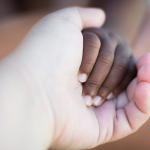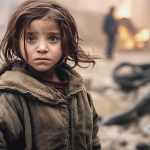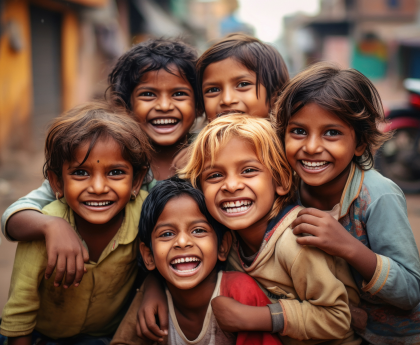Children of War: Healing Hearts and Nurturing Resilience in War-Affected Children
Understanding the Impact of War on Children: Exploring the Psychological and Emotional Consequences
War is a devastating experience that affects not only the physical landscape but also the lives of countless individuals, particularly children. The impact of war on children is profound, leaving them vulnerable to a range of psychological and emotional consequences. According to UNICEF, an estimated 250 million children worldwide are currently living in areas affected by armed conflict. These children often witness violence, lose loved ones, and experience displacement, leading to long-lasting trauma.
The psychological and emotional consequences of war on children are far-reaching. Many children suffer from post-traumatic stress disorder (PTSD), anxiety, depression, and other mental health disorders. They may exhibit symptoms such as nightmares, flashbacks, aggression, withdrawal, and difficulty concentrating. These experiences can hinder their ability to learn, form healthy relationships, and develop a sense of self-worth.
One example of the psychological impact of war on children is seen in the case of Syrian refugee children. A study conducted by Save the Children found that 75% of Syrian children have experienced symptoms of toxic stress, a condition caused by prolonged exposure to trauma. This stress can have long-term effects on their brain development and overall well-being.
The Road to Healing: Strategies and Approaches for Supporting War-Affected Children
Supporting war-affected children on their journey to healing requires a multifaceted approach that addresses their psychological, emotional, and social needs. One effective strategy is the provision of mental health and psychosocial support services. These services aim to provide children with a safe space to express their emotions, process their trauma, and develop coping mechanisms. Play therapy, art therapy, and group counseling are some of the approaches used to engage children in the healing process.
In addition to professional support, the involvement of caregivers and communities is crucial in the healing process. Caregivers play a vital role in providing stability, love, and support to war-affected children. By equipping caregivers with the necessary skills and knowledge, they can better understand and respond to the needs of their children. Community-based interventions, such as support groups and community centers, also provide a sense of belonging and social support for both children and their families.
Building Resilience: Empowering Children to Overcome Trauma and Adversity
Resilience is the ability to bounce back from adversity and thrive despite challenging circumstances. Building resilience in war-affected children is essential for their long-term recovery and well-being. Resilient children are better equipped to cope with stress, develop healthy relationships, and succeed academically.
One approach to building resilience is through education. Access to quality education not only provides children with knowledge and skills but also offers a sense of normalcy and stability. Education can be a powerful tool for healing, as it helps children regain a sense of control over their lives and provides hope for the future.
Another important factor in building resilience is the presence of supportive and caring adults in a child’s life. Positive relationships with caregivers, teachers, and mentors can provide a protective buffer against the negative effects of war trauma. These relationships offer children a sense of safety, trust, and emotional support, which are crucial for their resilience.
Promoting Long-Term Recovery: Creating Safe Spaces and Sustainable Support Systems for War-Affected Children
Promoting long-term recovery for war-affected children requires the creation of safe spaces and sustainable support systems. Safe spaces provide children with a physical and emotional environment where they can feel secure, express themselves, and engage in activities that promote healing. These spaces can be community centers, schools, or even temporary shelters in refugee camps.
Sustainable support systems involve the collaboration of various stakeholders, including governments, NGOs, and local communities. These systems aim to provide ongoing support and resources to war-affected children and their families. This support can include access to healthcare, education, vocational training, and economic opportunities. By addressing the holistic needs of children, sustainable support systems can help break the cycle of violence and create a brighter future for war-affected children.
In conclusion, the impact of war on children is profound, leaving them vulnerable to a range of psychological and emotional consequences. Understanding these consequences is crucial in developing effective strategies and approaches for supporting war-affected children. By providing mental health and psychosocial support services, involving caregivers and communities, building resilience, and creating safe spaces and sustainable support systems, we can help heal the hearts and nurture the resilience of war-affected children. Together, we can empower these children to overcome trauma and adversity, promoting their long-term recovery and well-being.






